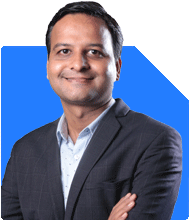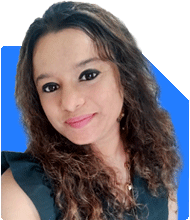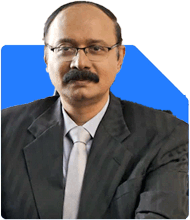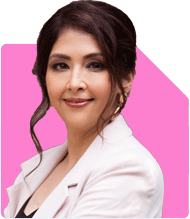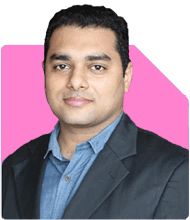Ramalingam Kalirajan |10881 Answers |Ask -Follow
Mutual Funds, Financial Planning Expert - Answered on May 26, 2024
He has an MBA in finance from the University of Madras and is a certified financial planner.
He is the director and chief financial planner at Holistic Investment, a Chennai-based firm that offers financial planning and wealth management advice.... more

Hi Sir. Pls suggest a few mutual fund sectors for investing 10 lakhs in SIP for a investment holding period 20-25 years. Goal is wealth creation and risk apatite is medium. Thanks.
Understanding Your Investment Horizon
Long-Term Benefits:
Compounding: Longer investment periods allow your investments to compound significantly.
Market Fluctuations: A long-term horizon helps to ride out market volatility, achieving better returns over time.
Recommended Mutual Fund Sectors
1. Large-Cap Funds:
Stability and Growth: These funds invest in large, well-established companies.
Less Volatility: They offer relatively stable returns compared to mid-cap and small-cap funds.
Steady Growth: Ideal for maintaining a solid foundation in your portfolio.
2. Mid-Cap Funds:
Growth Potential: These funds invest in medium-sized companies with higher growth potential.
Balanced Risk: They offer a balance between the stability of large-cap funds and the growth potential of small-cap funds.
3. Small-Cap Funds:
High Growth: These funds invest in small companies with the potential for significant growth.
Higher Risk: They are more volatile but can offer substantial returns over the long term.
4. Multi-Cap Funds:
Diversification: These funds invest across large-cap, mid-cap, and small-cap stocks.
Flexibility: Fund managers can adjust the portfolio mix based on market conditions.
5. Sectoral/Thematic Funds:
Focused Investment: These funds focus on specific sectors like technology, healthcare, or finance.
Higher Risk and Reward: Suitable for those willing to take on more risk for potential high returns in specific sectors.
6. Balanced/Hybrid Funds:
Risk Mitigation: These funds invest in a mix of equities and debt.
Stability and Growth: They offer a balance of growth potential and income stability.
SIP Allocation Strategy
Diversified Portfolio:
Large-Cap Funds: Allocate 30% of your SIP here for stability and consistent growth.
Mid-Cap Funds: Allocate 25% for higher growth potential with moderate risk.
Small-Cap Funds: Allocate 15% for high growth opportunities.
Multi-Cap Funds: Allocate 20% for diversification and flexibility.
Sectoral/Thematic Funds: Allocate 5% for focused high-risk, high-reward investments.
Balanced/Hybrid Funds: Allocate 5% for a mix of growth and stability.
Benefits of Regular Funds Over Direct Funds
Professional Management:
Expertise: Regular funds are managed by professionals who actively monitor and adjust the portfolio.
Personalized Strategy: Fund managers make informed decisions based on market trends and economic indicators.
Convenience and Support:
Guidance: Regular funds offer guidance and support from fund managers and advisors.
Ease of Access: These funds provide easy access to information and resources for investors.
Disadvantages of Direct Equity Investing
Higher Risk:
Volatility: Direct equity investments can be highly volatile, especially for individual investors.
Lack of Diversification: Investing in individual stocks can lead to lack of diversification, increasing risk.
Time and Knowledge:
Research Required: Direct equity investing requires extensive research and continuous monitoring.
Expertise Needed: It demands a higher level of expertise to make informed investment decisions.
Recommendations for Financial Security
Start Systematic Investment Plans (SIP):
Discipline: SIPs ensure disciplined and regular investing.
Rupee Cost Averaging: This approach helps mitigate market volatility over time.
Continue Provident Fund Contributions:
Retirement Corpus: Ensure continuous contributions to your provident fund for a substantial retirement corpus.
Set Up an Emergency Fund:
Safety Net: Set aside 6-12 months’ worth of expenses in a liquid fund for emergencies.
Conclusion
Investing Rs. 10 lakhs in SIPs across diversified mutual fund sectors can lead to substantial wealth creation over 20-25 years. Opt for a mix of large-cap, mid-cap, small-cap, multi-cap, sectoral, and balanced funds to balance risk and return. Regular funds, managed by professionals, offer better guidance and stability compared to direct equity investing. Ensure disciplined investing through SIPs, maintain your provident fund contributions, and set up an emergency fund for financial security.
Best Regards,
K. Ramalingam, MBA, CFP,
Chief Financial Planner,
www.holisticinvestment.in
You may like to see similar questions and answers below
Ulhas Joshi |280 Answers |Ask -Follow
Mutual Fund Expert - Answered on Mar 05, 2024
Jinal Mehta | Answer |Ask -Follow
Financial Planner - Answered on Feb 25, 2024
Ramalingam Kalirajan |10881 Answers |Ask -Follow
Mutual Funds, Financial Planning Expert - Answered on Aug 21, 2024
Ramalingam Kalirajan |10881 Answers |Ask -Follow
Mutual Funds, Financial Planning Expert - Answered on Apr 23, 2024
Dr Dipankar Dutta |1839 Answers |Ask -Follow
Tech Careers and Skill Development Expert - Answered on Dec 13, 2025
Dr Dipankar Dutta |1839 Answers |Ask -Follow
Tech Careers and Skill Development Expert - Answered on Dec 13, 2025
Mayank Chandel |2575 Answers |Ask -Follow
IIT-JEE, NEET-UG, SAT, CLAT, CA, CS Exam Expert - Answered on Dec 13, 2025
Radheshyam Zanwar |6742 Answers |Ask -Follow
MHT-CET, IIT-JEE, NEET-UG Expert - Answered on Dec 13, 2025
Mayank Chandel |2575 Answers |Ask -Follow
IIT-JEE, NEET-UG, SAT, CLAT, CA, CS Exam Expert - Answered on Dec 13, 2025
Mayank Chandel |2575 Answers |Ask -Follow
IIT-JEE, NEET-UG, SAT, CLAT, CA, CS Exam Expert - Answered on Dec 13, 2025
Kanchan Rai |646 Answers |Ask -Follow
Relationships Expert, Mind Coach - Answered on Dec 12, 2025
Ravi Mittal |677 Answers |Ask -Follow
Dating, Relationships Expert - Answered on Dec 12, 2025
Ramalingam Kalirajan |10881 Answers |Ask -Follow
Mutual Funds, Financial Planning Expert - Answered on Dec 12, 2025
Ramalingam Kalirajan |10881 Answers |Ask -Follow
Mutual Funds, Financial Planning Expert - Answered on Dec 12, 2025









